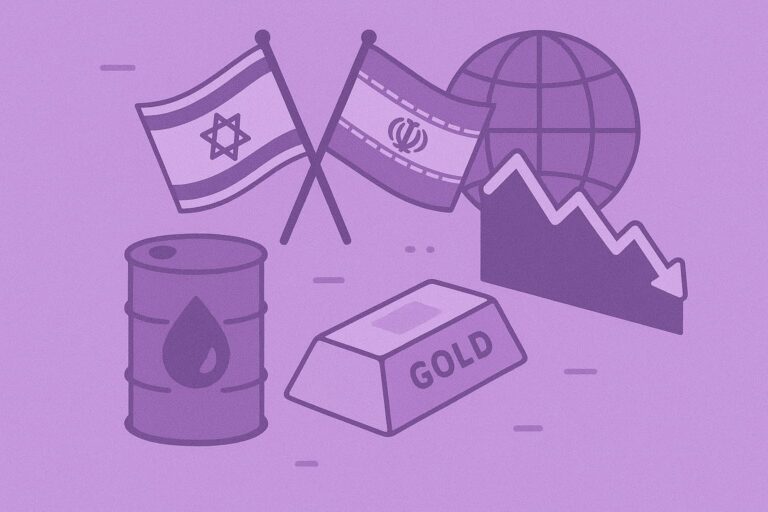For retail investors looking to build long-term wealth, two popular investment vehicles often dominate the conversation: Exchange-Traded Funds (ETFs) and Mutual Funds. Both offer diversified exposure to the market, professional management, and broad accessibility—but they differ in important ways that can impact returns, costs, and flexibility.
So, which is best for you in 2025?
Let’s break down the key differences, pros and cons, and ideal use cases for each, so you can make an informed decision.
What Are ETFs and Mutual Funds?
ETFs (Exchange-Traded Funds)
ETFs are investment funds that hold a collection of securities like stocks, bonds, or commodities. They are traded on stock exchanges, just like individual stocks.
Most are passively managed, tracking an index (like the S&P 500).
You can buy and sell them throughout the day at market price.
Mutual Funds
Mutual funds pool money from investors to invest in a portfolio of assets, managed by a fund manager or team.
Can be actively or passively managed
Bought/sold at end-of-day net asset value (NAV), not on exchanges
Key Differences at a Glance
| Feature | ETFs | Mutual Funds |
|---|---|---|
| Traded like stocks | ✅ Yes | ❌ No |
| Minimum investment | 💲Low (1 share) | 📈 Varies ($500–$3,000+) |
| Fees | 🟢 Usually lower | 🔴 Can be higher (active management) |
| Management style | Mostly passive | Active or passive |
| Tax efficiency | 🟢 More tax-efficient | 🔴 Less tax-efficient |
| Real-time pricing | ✅ Yes | ❌ No |
| Automatic reinvestment | 🔄 Requires setup | ✅ Often automatic |
| Purchase channel | Broker | Broker or direct via fund |
Pros and Cons of ETFs
✅ Pros:
Low Fees
Most ETFs are passively managed, meaning lower expense ratios (often < 0.10%).
Liquidity and Flexibility
Buy/sell anytime during market hours.
Set limit orders, stop-loss, etc.
Tax Efficiency
ETFs use an “in-kind” creation/redemption mechanism that helps minimize capital gains distributions.
No Minimum Investment
You can buy a single share, and many brokers offer fractional shares.
Wide Variety
Track indexes, sectors, countries, or even thematic strategies (e.g., AI, crypto, ESG).
❌ Cons:
Trading Fees (in rare cases)
Some brokers still charge commissions.
Bid-Ask Spreads
Thinly traded ETFs may have wide spreads, adding hidden cost.
Too Many Choices
With thousands of ETFs available, new investors may feel overwhelmed.
Pros and Cons of Mutual Funds
✅ Pros:
Professional Management
Many mutual funds are actively managed by experienced teams aiming to beat the market.
Built-in Reinvestment
Dividends and capital gains can be automatically reinvested with no action needed.
Ease of Use
Ideal for automatic investing via retirement plans like 401(k) and IRAs.
No Trading Required
Buy or redeem shares at daily NAV; no need to monitor market timing.
❌ Cons:
Higher Costs
Active management often means expense ratios above 0.5%, sometimes >1%.
Minimum Investment Amounts
Some funds require $1,000 to $3,000+ just to get started.
Less Tax Efficient
Fund managers buying/selling securities can trigger capital gains passed on to investors.
No Intraday Trading
You can’t act on market movements during the day—everything settles at the closing NAV.
When to Choose ETFs
ETFs might be better for you if:
You want lower fees
You prefer real-time trading
You are building your portfolio through DIY brokerage platforms
You want exposure to specific themes, sectors, or commodities
You’re tax-sensitive
Popular ETF examples:
SPY (S&P 500 Index)
QQQ (Nasdaq 100)
VTI (Total U.S. Market)
ARKK (Innovation/Disruption-focused)
When to Choose Mutual Funds
Mutual funds might be a better choice if:
You’re investing through a retirement plan (401(k), 403(b), IRA)
You value active management in certain asset classes (e.g., emerging markets)
You want hands-off investing with built-in reinvestment
You’re comfortable with end-of-day pricing
Popular Mutual Fund examples:
Vanguard 500 Index Fund (VFIAX)
Fidelity Contrafund (FCNTX)
T. Rowe Price Blue Chip Growth (TRBCX)
ETF vs. Mutual Fund: Cost Example
Suppose you invest $10,000 for 10 years with 7% average annual return.
| Fund Type | Expense Ratio | Ending Value |
|---|---|---|
| ETF (0.10%) | $70/year | ~$19,570 |
| Mutual Fund (1.00%) | $700/year | ~$17,470 |
Over time, fees compound, making ETFs more cost-effective for most retail investors.
Tax Considerations
ETFs are more tax-efficient thanks to their structure. You typically only pay capital gains when you sell.
Mutual funds may distribute capital gains even if you don’t sell shares—triggering a tax bill.
If investing in a taxable account, ETFs usually make more sense.
2025 Outlook: Which Is Better?
The financial world in 2025 continues to move toward automation, personalization, and low-cost investing. ETFs have gained ground thanks to:
Zero-commission brokers
App-based investing platforms
High customization and transparency
But mutual funds are far from obsolete, especially in employer-sponsored plans and for investors who prefer guided investment.
Final Verdict
| Goal | Best Option |
|---|---|
| Low fees and tax efficiency | ✅ ETF |
| Active management | ✅ Mutual Fund |
| Intraday trading flexibility | ✅ ETF |
| Retirement accounts | ✅ Mutual Fund |
| Set-it-and-forget-it investing | ✅ Mutual Fund |
| Thematic, niche strategies | ✅ ETF |
Bottom Line:
For most retail investors starting in 2025, ETFs offer more flexibility, lower costs, and easier access—especially through modern brokerage platforms. But if you’re investing through a retirement plan or prefer a managed approach, mutual funds still have their place.





